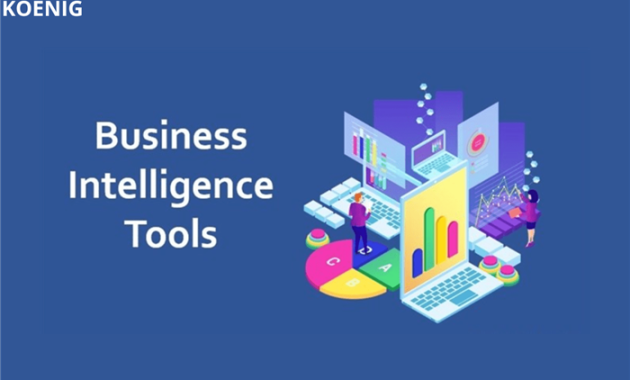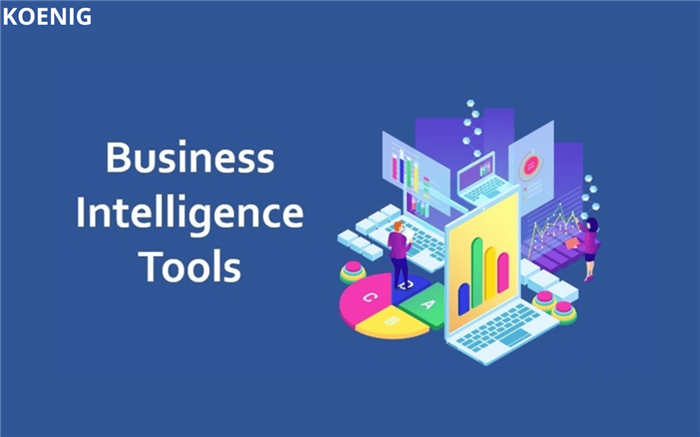
Top 3 Business Intelligence Tools to Maximize ROI: A Data-Driven Guide
In today’s fast-paced business environment, data is king. The ability to analyze this data and extract actionable insights is crucial for success. This is where Business Intelligence (BI) tools come into play. They transform raw data into meaningful information, enabling businesses to make informed decisions and improve their Return on Investment (ROI). This article will explore the top 3 Business Intelligence tools that can help you maximize ROI. We will delve into their features, benefits, and how they can be leveraged to gain a competitive edge. Choosing the right tool is critical.
Understanding the Power of Business Intelligence
Business Intelligence is more than just data analysis. It’s a process of collecting, processing, analyzing, and visualizing data to provide valuable insights. These insights can be used to identify trends, forecast future performance, and optimize business processes. Effective BI tools empower businesses to:
- Improve decision-making.
- Increase operational efficiency.
- Identify new revenue opportunities.
- Reduce costs.
- Enhance customer satisfaction.
The top 3 Business Intelligence tools discussed below offer different strengths. They cater to various business needs and technical expertise levels. The selection of the right tool depends on your specific requirements and organizational goals. Investing in the right BI solution is a strategic move. It can lead to significant improvements in ROI.
Tool 1: Power BI – Microsoft’s Data Visualization Powerhouse
Microsoft Power BI is a leading BI tool. It offers powerful data visualization and analysis capabilities. Power BI is known for its user-friendly interface and extensive features. It allows users to connect to a wide range of data sources, including cloud services and on-premises databases. This flexibility makes it a versatile solution for businesses of all sizes. It’s also a very cost-effective tool.
Key Features of Power BI
- Data Connectivity: Power BI connects to various data sources. These include Excel, SQL Server, Salesforce, and more.
- Data Modeling: Users can create data models. They can also establish relationships between different data sets.
- Data Visualization: Power BI offers a wide array of visualization options. These include charts, graphs, and dashboards.
- Data Analysis: Power BI supports advanced data analysis. It also supports DAX (Data Analysis Expressions) for complex calculations.
- Collaboration: Power BI allows users to share reports and dashboards. They can collaborate with colleagues.
Power BI’s intuitive interface allows users to quickly create compelling visualizations. These help reveal insights from data. Its strong data modeling capabilities are key to analyzing complex datasets. The ability to connect to various data sources is another major advantage. This ensures you can integrate data from all your relevant systems. Power BI’s affordable pricing makes it a great option for businesses. It helps them maximize ROI.
How Power BI Helps Maximize ROI
Power BI enables businesses to:
- Improve Sales Performance: Analyze sales data to identify top-performing products and sales strategies.
- Optimize Marketing Campaigns: Track marketing campaign performance and identify areas for improvement.
- Enhance Operational Efficiency: Monitor key performance indicators (KPIs). Identify bottlenecks and streamline processes.
- Reduce Costs: Identify areas where costs can be reduced. This includes inventory management and resource allocation.
Power BI helps you make data-driven decisions. This leads to better resource allocation and cost savings. It helps in generating a higher ROI.
Tool 2: Tableau – The Data Visualization Leader
Tableau is another industry-leading BI tool. It is renowned for its powerful data visualization capabilities and user-friendly interface. Tableau allows users to create interactive dashboards. These dashboards are easy to understand and share. Tableau’s focus is on visual data analysis. It makes it easier for users to explore and discover insights. This is critical for maximizing ROI.
Key Features of Tableau
- Data Visualization: Tableau offers a vast library of visualization options. It also provides customization options.
- Interactive Dashboards: Users can create interactive dashboards. These allow users to explore data dynamically.
- Data Connectivity: Tableau connects to a wide range of data sources. This includes databases, cloud services, and spreadsheets.
- Data Blending: Tableau allows users to blend data from different sources. This allows for comprehensive analysis.
- Collaboration: Tableau provides collaboration features. These include sharing dashboards and real-time data updates.
Tableau excels in creating visually appealing and insightful dashboards. Its drag-and-drop interface makes it easy to create visualizations. Its data blending capabilities are especially useful. They allow you to combine data from multiple sources. Tableau’s ability to handle large datasets is another key strength. This is important for complex analyses. Tableau is a powerful tool for businesses. It helps them improve decision-making.
How Tableau Helps Maximize ROI
Tableau enables businesses to:
- Improve Customer Understanding: Analyze customer data to understand customer behavior and preferences.
- Optimize Pricing Strategies: Analyze sales data to determine optimal pricing strategies.
- Enhance Supply Chain Management: Monitor supply chain performance. Identify areas for improvement.
- Improve Decision Making: Gain a deeper understanding of business operations. Make informed decisions.
Tableau’s ability to visualize complex data makes it easier to identify trends and patterns. This can lead to better decisions. It also leads to a higher ROI.
Tool 3: Qlik Sense – The Associative Data Analytics Pioneer
Qlik Sense is a BI tool. It is known for its associative data analytics engine. This allows users to explore data in a more intuitive way. Qlik Sense uses an associative model. It allows users to see relationships between data points. This helps them uncover hidden insights. Qlik Sense is an excellent option for businesses. They want a powerful and intuitive BI solution. It will help them maximize ROI.
Key Features of Qlik Sense
- Associative Data Modeling: Qlik Sense uses an associative model. This allows users to explore data in a more intuitive way.
- Data Visualization: Qlik Sense offers a wide range of visualization options. It also offers customization options.
- Data Connectivity: Qlik Sense connects to various data sources. These include databases, cloud services, and spreadsheets.
- Self-Service Analytics: Qlik Sense empowers users to perform self-service analytics. They can create their own dashboards.
- Collaboration: Qlik Sense provides collaboration features. These include sharing dashboards and real-time data updates.
Qlik Sense’s associative data model is its key differentiator. This model makes it easy to discover hidden insights. Its self-service analytics capabilities are another major advantage. They empower business users to analyze data. Qlik Sense is a flexible and scalable solution. It is suitable for businesses of all sizes. It helps them improve their decision-making. It also helps them maximize ROI.
How Qlik Sense Helps Maximize ROI
Qlik Sense enables businesses to:
- Optimize Inventory Management: Analyze inventory data to optimize inventory levels and reduce carrying costs.
- Improve Sales Forecasting: Analyze sales data to improve sales forecasting accuracy.
- Enhance Customer Relationship Management: Analyze customer data to improve customer relationships.
- Improve Decision Making: Gain a deeper understanding of business operations. Make more informed decisions.
Qlik Sense’s intuitive interface and powerful analytics capabilities help businesses. They can identify opportunities for improvement. They can also make better decisions. This leads to a higher ROI.
Choosing the Right BI Tool for Your Business
Selecting the right Business Intelligence tool is critical. It depends on your specific business needs and technical expertise. Consider the following factors when making your decision:
- Data Sources: Ensure the tool can connect to all your data sources.
- Data Visualization Needs: Choose a tool that offers the visualizations you need.
- User Experience: Select a tool that is easy for your team to use.
- Scalability: Choose a tool that can scale with your business.
- Budget: Consider the cost of the tool.
By carefully evaluating these factors, you can choose the BI tool. It will help you maximize ROI. This will also help you achieve your business goals. A well-chosen tool can transform your business. It can give you a competitive edge.
Conclusion: Data-Driven Decisions for a Better ROI
Business Intelligence tools are essential for success. They transform raw data into actionable insights. They also empower businesses to make data-driven decisions. Power BI, Tableau, and Qlik Sense are all excellent choices. They can help you maximize ROI. By choosing the right tool, businesses can unlock the full potential of their data. They can also drive significant improvements in performance. It is a vital investment. It is critical in today’s data-driven world. [See also: The Future of Business Intelligence]
Investing in the right BI tool is an investment in your future. It enables you to make better decisions. It also improves your ROI. Embrace the power of data. Use the top 3 Business Intelligence tools. You can drive your business to new heights.

